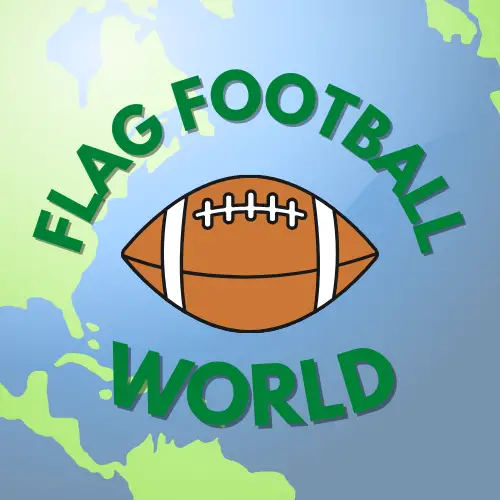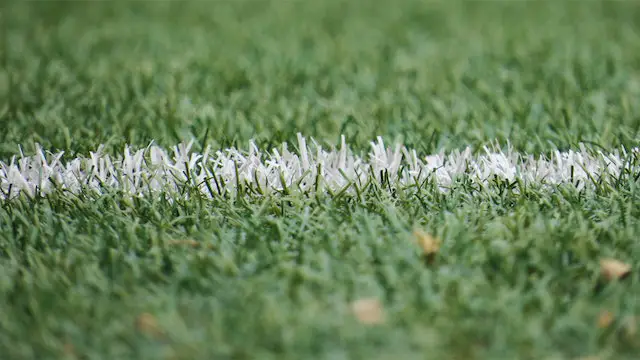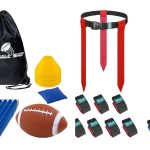Flag football is on the rise as a popular sport, and with that popularity comes a greater understanding of the game and its rules. One important aspect of flag football is understanding the field lines and what they mean for the game.
Though the field of play looks a lot like tackle football, some key differences impact the game.
The primary difference is that, instead of tackling the ball carrier to the ground, the defensive player must remove a flag or ribbon from the ball carrier’s belt to mark them as “down.”
This makes the game much safer than tackle football, as there are no hard hits and no risk of serious injury.
The field of play is also smaller than a traditional football field, typically ranging from 70-100 yards in length and 30-50 yards in width.
Within those dimensions, there are a few key lines that players need to be aware of. And we are here to guide you to understanding flag football field lines and rules.
The Scrimmage Line
The first line any player should be aware of is the scrimmage line. This is the line where the offensive team must have all their players lined up at the start of each play. The defensive team must also have all their players behind this line, with no one crossing over until the play begins.
This line is also where the ball is spotted after each play. So, if the offense runs a play and the ball carrier is tackled behind the scrimmage line or makes a big gain down the field, that is where the next play will start.
The First Down Line
The second key line on the field is the first down line. This is the line that the offensive team must cross in order to earn a first down. In most flag football leagues, the first down is awarded when the offense crosses the line with the ball in their possession, regardless of how far they have moved up the field.
Some leagues use a different system where the first down is only awarded if the offense moves the ball 10 yards or more from their original starting position.
The first down line is typically marked 10 yards from the scrimmage line, but this can vary depending on the league.
The Goal Line
The final key line on a flag football field is the goal line. This is the line that the offense must cross in order to score a touchdown.
Like traditional American football, the goal line is typically marked 10 yards from the end of the field, but this can vary depending on the league, like NFL Flag.
Other Key Lines And Area Rules
Apart from the above three key lines, there are a few other lines and areas on a flag football field that players should be aware of.
Side-Line:
The sideline is a line that goes the length of the playing field and marks its perimeter. If the ball or player possessing the ball crosses or touches this line, they are out-of-bounds and the play ends.
Depending on league game rules, the clock may stop when a player with the ball goes over the sideline.
End Line:
It is a line that goes the width of the field and marks the end of the playing area. The ball is out-of-bounds if it crosses or touches this line.
Safety Margin:
This is the minimum distance (usually 10 yards from the end lines or 5 yards from the side-line) that must be kept between the playing field and must not have any hard and unyielding objects (e.g., trees, poles, fences).
Adjacent Fields:
Where there are two or more fields next to each other, there must be a minimum of 10 yards between “end on end” and fields 5 yards between “side by side” fields.
Team Box:
It is a designated area for team members (players and non-players) that is located 2 yards off the sideline and between the 20-yard lines.
Know Your Flag Football Field Lines In Advance!
To play flag football, it is important to know the field lines and rules. This will help you stay safe and have more fun while playing the game.
For more information, make sure to read our flag football beginner’s guide.
Knowing the key lines on the field will also help you understand the game better and make sure that you are playing within the rules. So, take some time to familiarize yourself with the flag football field lines and rules before your next game!

Vance J has played flag football since he was a boy. Since then, he has become a coach and a huge advocate for growing the sport. He loves to write and talk about flag football!







